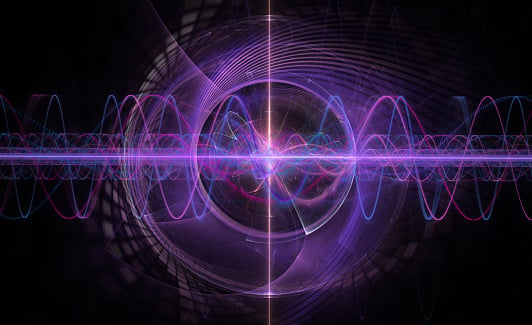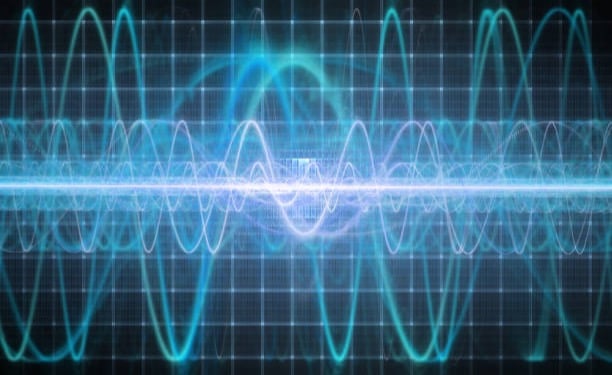Share this
What is Electromagnetic Interference (EMI)?
by Christopher Trick on Sep 16, 2022 9:32:49 AM

Ensuring that electrical paths are kept free of outside interference is vital, as the slightest disruption can cause serious damage to a device or devices in close proximity.
In this blog, you'll learn more about what electromagnetic interference (EMI) is, its causes, and how Trenton's BAM servers are ruggedized to prevent it from damaging critical components within a high-performance computing infrastructure.
What is electromagnetic interference (EMI)?
Electromagnetic interference (EMI) is unwanted noise or interference in an electrical path or circuit caused by an electromagnetic field (EMF) from an outside source.
Also known as radio frequency interference, EMI can adversely impact electronics, causing them to operate poorly, malfunction, or stop working completely.
EMI is primarily caused by natural or human-made sources, but high-quality electronic, electrical shielding, and modern error correction can reduce its impact.
What causes electromagnetic interference?
EMI occurs as a result of the close relationship between electricity and magnetism. All electrical flow produces a small magnetic field, and a moving magnetic field produces an electrical current. These conditions are what allow electric motors and generators to work.
High-powered electrical and radio sources can produce unwanted effects in devices far away, damaging critical components. As electronics become smaller, faster, more tightly packed, and more sensitive, they become more susceptible to these effects, and this causes EMI.
As mentioned previously, the sources of EMI can be split into two categories: naturally occurring and human-made.
Some natural sources that affect electronic devices through producing EMFs are lightning, solar storms, and solar flares. Human-made EMI can come from high-power radio, electrical sources, and even everyday devices like cellphones; it can also come from malfunctioning or improperly designed consumer devices.
For all data centers hosting servers, however, their own internal equipment is the greatest source of EMI. Some data centers get exposed to EMI because they are located close to electrical railway tracks, airports, or telecommunication towers.
What are the effects of electromagnetic interference?
With a data center, most sources of EMI remain hidden. Uncontrolled EMFs can have adverse effects on all of the hardware within the data center, including servers and cables; they also increase vulnerability to EMF attacks.
Effects on data centers/hardware
When located in close proximity to strong EMFs, data center cables get exposed to unwanted currents and may experience a surge in voltage. This creates an electrical "noise" that, in turn, affects the applications that the cables are designed to support.
EMI also causes remote receivers to fail to detect data packets, which results in packet retransmissions and, as a result, network congestion.
Low-frequency EMI can seriously impair the performance of data center hardware, even so far as completely wiping out all of the data on hard-disk or solid-state drives (SSDs).
EMF Attacks
Hackers can use EMI to infiltrate a data center without physically entering the facility.
This can lead to:
- Stealing of information from databases handled by servers kept at these centers, which is done by tapping telecommunication equipment like terminals that emit weak electromagnetic signals.
- Attacks on a data center directly by making it exposed to high-power electromagnetic waves.
- Producing a crash by exposing a center to high-power electromagnetics.
 Uncontrolled EMFs can have adverse effects on all of the hardware within the data center, including servers and cables; they also increase vulnerability to EMF attacks.
Uncontrolled EMFs can have adverse effects on all of the hardware within the data center, including servers and cables; they also increase vulnerability to EMF attacks.
Types of electromagnetic interference
EMI involves a path and a receptor (victim).
There are three types of paths, or methods of transmission, of EMI from the source to the receptor: radiated EMI, conducted EMI, and coupled EMI.
Let's take a look at each.
Radiated EMI
Radiated EMI occurs when a high-power transmitter or electrical device produces a radio frequency that is picked up and causes negative effects in another device.
If EMI is present, and the source and receptor are far apart, then it is likely radiated EMI. For example, an old wireless telephone causes WiFi in a house to drop off.
Radiated EMI can be divided into two categories: narrowband and broadband interference.
- Narrowband EMI only affects a specific radio frequency and is commonly from a radio transmitter.
- Broadband EMI affects a large portion of the radio spectrum at many frequencies and is commonly caused by malfunctioning equipment.
Conducted EMI
Conducted EMI happens when there is a physical electrical path from the source to the receptor, often along power transmission lines. For example, a TV and washing machine both turn on, causing a computer on the same electrical circuit to reboot.
Coupled EMI
Coupled EMI happens when the source and receptor are close together, but they are not electrically connected.
Coupled EMI can be divided into two categories: inducted--or magnetically coupled--EMI, or capacitively coupled EMI.
- Inducted (magnetically coupled) EMI occurs when a conductor's magnetic field induces an unwanted cable in a nearby conductor. For example, a power cable and audio cable are near each other, and a hum is heard on the audio line.
- Capacitively coupled EMI occurs when two conductors are parallel and store a capacitive charge between them. This type of EMI requires the conductors to be very close together and is most common on electronic circuit boards or in groups of closely-packed wires running long distances.
How to prevent electromagnetic interference
The best way to prevent EMI is to use reliable, quality electronics from reputable suppliers.
The FCC (Federal Communications Commission) requires that all devices be tested against emission standards to prevent them from causing excessive EMI in other devices.
Poorly made, cheap, and even counterfeit electronics are not properly tested or may not be EM (electromagnetic) shielded. This increases the likelihood that they will cause EMI in other devices, and the devices themselves are more susceptible to EMI.
When it comes to high-speed networking, it is vital that proper precautions are taken to prevent EMI. For wired networks, power lines should be separated from data lines.
Wireless network planning may also need to account for the number and power of transmission sites, nearby radio sources, and high-power transmission lines.
Ethernet cables such as twisted pair cables and fiber optic cables provide adequate safeguards against EMI.
EMI prevention is especially important in designing electronics and circuit boards for high-speed devices. Board designers must count for component location and routing; they may also include metal shielding cans or conductive tape to block EMI from affecting sensitive components.
 The best way to prevent EMI is to use reliable, quality electronics from reputable suppliers. Poorly made, cheap, and even counterfeit electronics are not properly tested or may not be EM shielded.
The best way to prevent EMI is to use reliable, quality electronics from reputable suppliers. Poorly made, cheap, and even counterfeit electronics are not properly tested or may not be EM shielded.
MIL-STD-461 and electromagnetic interference
Military customers often require their technology to be MIL-STD-461-certified.
This ensures that their high-performance computing solutions can function properly within electromagnetic environments and avoid releasing harmful EMFs that could cause EMI with nearby devices, impeding functionality and data security.
For a more in-depth explanation of MIL-STD-461, click here.
How does Trenton Systems prevent electromagnetic interference?
EMI prevention is vital for our servers, as they are often stored in data centers with other servers for high-end compute applications.
EMI within one server can spread to other devices, which can have life-threatening consequences within a military environment.
For example, say a server within a naval data center is trying to detect and track an underwater missile. If the server is impacted by EMI, it can shut down, and EMI can spread to other devices, depriving those operating the ship of key insights needed to stay vigilant of enemy threats.
Trenton's BAM rack mount servers can be MIL-STD-461-certified to prevent EMI from compromising operational integrity.
Our new 3U BAM XRS, for example, is designed with extra depth and an EMI-filtered power supply to limit damage to critical components and interference with existing infrastructure.
Final thoughts
When constructing computing solutions for government and military environments, it is vital that a system's architecture is incorporated with adequate safeguards against any kind of interference, whether physical or electronic, that can impair its functionality.
EMI introduces harmful electromagnetic fields into or in the vicinity of data center servers, which can damage a single server and, subsequently, spread to other servers. This opens the door to cyberattacks, data loss, and failure of mission-critical objectives.
At Trenton, our computing solutions are able to meet the most demanding technical, performance, and environmental specifications to optimize performance across the modern multi-domain battlespace.
We are able to certify our own products both in-house and through third parties to the most complex military standards, including MIL-STD-461, protecting our systems against threats such as EMI that can compromise a server's operations.
With a tight grip on our supply chain, we are able to detect and destroy counterfeit parts and components that increase a server's vulnerability to EMI.
In addition, our systems are equipped with advanced, multi-layer cybersecurity technologies to thwart hacker threats like EMF attacks and protect sensitive information at-rest, in-use, and in-transit across the hardware, firmware, software, and network stack.
Want to learn more about how we can help guard your high-end compute applications against EMI? Just reach out us anytime here. We'd be happy to help. 🙂
Source:Share this
- High-performance computers (42)
- Military computers (38)
- Rugged computers (32)
- Cybersecurity (25)
- Industrial computers (25)
- Military servers (24)
- MIL-SPEC (20)
- Rugged servers (19)
- Press Release (17)
- Industrial servers (16)
- MIL-STD-810 (16)
- 5G Technology (14)
- Intel (13)
- Rack mount servers (12)
- processing (12)
- Computer hardware (11)
- Edge computing (11)
- Rugged workstations (11)
- Made in USA (10)
- Partnerships (9)
- Rugged computing (9)
- Sales, Marketing, and Business Development (9)
- Trenton Systems (9)
- networking (9)
- Peripheral Component Interconnect Express (PCIe) (7)
- Encryption (6)
- Federal Information Processing Standards (FIPS) (6)
- GPUs (6)
- IPU (6)
- Joint All-Domain Command and Control (JADC2) (6)
- Server motherboards (6)
- artificial intelligence (6)
- Computer stress tests (5)
- Cross domain solutions (5)
- Mission-critical servers (5)
- Rugged mini PCs (5)
- AI (4)
- BIOS (4)
- CPU (4)
- Defense (4)
- Military primes (4)
- Mission-critical systems (4)
- Platform Firmware Resilience (PFR) (4)
- Rugged blade servers (4)
- containerization (4)
- data protection (4)
- virtualization (4)
- Counterfeit electronic parts (3)
- DO-160 (3)
- Edge servers (3)
- Firmware (3)
- HPC (3)
- Just a Bunch of Disks (JBOD) (3)
- Leadership (3)
- Navy (3)
- O-RAN (3)
- RAID (3)
- RAM (3)
- Revision control (3)
- Ruggedization (3)
- SATCOM (3)
- Storage servers (3)
- Supply chain (3)
- Tactical Advanced Computer (TAC) (3)
- Wide-temp computers (3)
- computers made in the USA (3)
- data transfer (3)
- deep learning (3)
- embedded computers (3)
- embedded systems (3)
- firmware security (3)
- machine learning (3)
- Automatic test equipment (ATE) (2)
- C6ISR (2)
- COTS (2)
- COVID-19 (2)
- CPUs (2)
- Compliance (2)
- Compute Express Link (CXL) (2)
- Computer networking (2)
- Controlled Unclassified Information (CUI) (2)
- DDR (2)
- DDR4 (2)
- DPU (2)
- Dual CPU motherboards (2)
- EW (2)
- I/O (2)
- Military standards (2)
- NVIDIA (2)
- NVMe SSDs (2)
- PCIe (2)
- PCIe 4.0 (2)
- PCIe 5.0 (2)
- RAN (2)
- SIGINT (2)
- SWaP-C (2)
- Software Guard Extensions (SGX) (2)
- Submarines (2)
- Supply chain security (2)
- TAA compliance (2)
- airborne (2)
- as9100d (2)
- chassis (2)
- data diode (2)
- end-to-end solution (2)
- hardware security (2)
- hardware virtualization (2)
- integrated combat system (2)
- manufacturing reps (2)
- memory (2)
- mission computers (2)
- private 5G (2)
- protection (2)
- secure by design (2)
- small form factor (2)
- software security (2)
- vRAN (2)
- zero trust (2)
- zero trust architecture (2)
- 3U BAM Server (1)
- 4G (1)
- 4U (1)
- 5G Frequencies (1)
- 5G Frequency Bands (1)
- AI/ML/DL (1)
- Access CDS (1)
- Aegis Combat System (1)
- Armed Forces (1)
- Asymmetric encryption (1)
- C-RAN (1)
- COMINT (1)
- Cloud-based CDS (1)
- Coast Guard (1)
- Compliance testing (1)
- Computer life cycle (1)
- Containers (1)
- D-RAN (1)
- DART (1)
- DDR5 (1)
- DMEA (1)
- Data Center Modular Hardware System (DC-MHS) (1)
- Data Plane Development Kit (DPDK) (1)
- Defense Advanced Research Projects (DARP) (1)
- ELINT (1)
- EMI (1)
- EO/IR (1)
- Electromagnetic Interference (1)
- Electronic Warfare (EW) (1)
- FIPS 140-2 (1)
- FIPS 140-3 (1)
- Field Programmable Gate Array (FPGA) (1)
- Ground Control Stations (GCS) (1)
- Hardware-based CDS (1)
- Hybrid CDS (1)
- IES.5G (1)
- ION Mini PC (1)
- IP Ratings (1)
- IPMI (1)
- Industrial Internet of Things (IIoT) (1)
- Industry news (1)
- Integrated Base Defense (IBD) (1)
- LAN ports (1)
- LTE (1)
- Life cycle management (1)
- Lockheed Martin (1)
- MIL-S-901 (1)
- MIL-STD-167-1 (1)
- MIL-STD-461 (1)
- MIL-STD-464 (1)
- MOSA (1)
- Multi-Access Edge Computing (1)
- NASA (1)
- NIC (1)
- NIC Card (1)
- NVMe (1)
- O-RAN compliant (1)
- Oil and Gas (1)
- Open Compute Project (OCP) (1)
- OpenRAN (1)
- P4 (1)
- PCIe card (1)
- PCIe lane (1)
- PCIe slot (1)
- Precision timestamping (1)
- Product life cycle (1)
- ROM (1)
- Raytheon (1)
- Remotely piloted aircraft (RPA) (1)
- Rugged computing glossary (1)
- SEDs (1)
- SIM Card (1)
- Secure boot (1)
- Sensor Open Systems Architecture (SOSA) (1)
- Small form-factor pluggable (SFP) (1)
- Smart Edge (1)
- Smart NIC (1)
- SmartNIC (1)
- Software-based CDS (1)
- Symmetric encryption (1)
- System hardening (1)
- System hardening best practices (1)
- TME (1)
- Tech Partners (1)
- Total Memory Encryption (TME) (1)
- Transfer CDS (1)
- USB ports (1)
- VMEbus International Trade Association (VITA) (1)
- Vertical Lift Consortium (VLC) (1)
- Virtual machines (1)
- What are embedded systems? (1)
- Wired access backhaul (1)
- Wireless access backhaul (1)
- accredidation (1)
- aerospace (1)
- air gaps (1)
- airborne computers (1)
- asteroid (1)
- authentication (1)
- autonomous (1)
- certification (1)
- cognitive software-defined radios (CDRS) (1)
- command and control (C2) (1)
- communications (1)
- cores (1)
- custom (1)
- customer service (1)
- customer support (1)
- data linking (1)
- data recording (1)
- ethernet (1)
- full disk encryption (1)
- hardware monitoring (1)
- heat sink (1)
- hypervisor (1)
- in-house technical support (1)
- input (1)
- integrated edge solution (1)
- international business (1)
- licensed spectrum (1)
- liquid cooling (1)
- mCOTS (1)
- microelectronics (1)
- missile defense (1)
- mixed criticality (1)
- moving (1)
- multi-factor authentication (1)
- network slicing (1)
- neural networks (1)
- new headquarters (1)
- next generation interceptor (1)
- non-volatile memory (1)
- operating system (1)
- output (1)
- outsourced technical support (1)
- post-boot (1)
- pre-boot (1)
- private networks (1)
- public networks (1)
- radio access network (RAN) (1)
- reconnaissance (1)
- rugged memory (1)
- secure flash (1)
- security (1)
- self-encrypting drives (SEDs) (1)
- sff (1)
- software (1)
- software-defined radios (SDRs) (1)
- speeds and feeds (1)
- standalone (1)
- storage (1)
- systems (1)
- tactical wide area networks (1)
- technical support (1)
- technology (1)
- third-party motherboards (1)
- troposcatter communication (1)
- unlicensed spectrum (1)
- volatile memory (1)
- vpx (1)
- zero trust network (1)
- January 2025 (1)
- November 2024 (1)
- October 2024 (1)
- August 2024 (1)
- July 2024 (1)
- May 2024 (1)
- April 2024 (3)
- February 2024 (1)
- November 2023 (1)
- October 2023 (1)
- July 2023 (1)
- June 2023 (3)
- May 2023 (7)
- April 2023 (5)
- March 2023 (7)
- December 2022 (2)
- November 2022 (6)
- October 2022 (7)
- September 2022 (8)
- August 2022 (3)
- July 2022 (4)
- June 2022 (13)
- May 2022 (10)
- April 2022 (4)
- March 2022 (11)
- February 2022 (4)
- January 2022 (4)
- December 2021 (1)
- November 2021 (4)
- September 2021 (2)
- August 2021 (1)
- July 2021 (2)
- June 2021 (3)
- May 2021 (4)
- April 2021 (3)
- March 2021 (3)
- February 2021 (8)
- January 2021 (4)
- December 2020 (5)
- November 2020 (5)
- October 2020 (4)
- September 2020 (4)
- August 2020 (6)
- July 2020 (9)
- June 2020 (11)
- May 2020 (13)
- April 2020 (8)
- February 2020 (1)
- January 2020 (1)
- October 2019 (1)
- August 2019 (2)
- July 2019 (2)
- March 2019 (1)
- January 2019 (2)
- December 2018 (1)
- November 2018 (2)
- October 2018 (5)
- September 2018 (3)
- July 2018 (1)
- April 2018 (2)
- March 2018 (1)
- February 2018 (9)
- January 2018 (27)
- December 2017 (1)
- November 2017 (2)
- October 2017 (3)
/Trenton%20Systems%20Circular%20Logo-3.png?width=50&height=50&name=Trenton%20Systems%20Circular%20Logo-3.png)
No Comments Yet
Let us know what you think